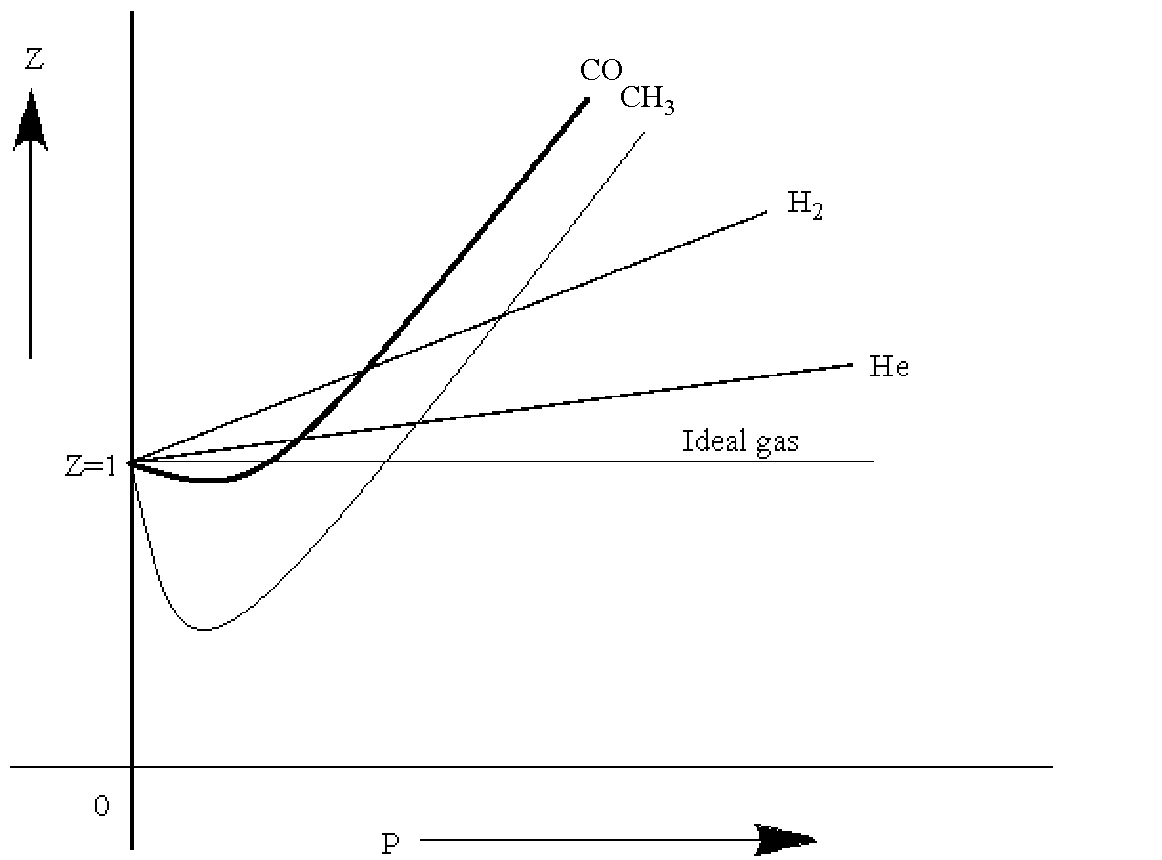
Boyle’s temperature or Boyle point is the temperature at which a real gas starts behaving like an ideal gas over a particular range of pressure. A graph is plotted between the compressibility factor Z and pressure P.
What is the variation of Z with P?
(A) At very low pressures, all gases show Z
(B) At high pressures, all gases show Z>1
(C) At intermediate pressures, all gases show Z<1
(D) All of the above
Answer
496.2k+ views
1 likes
Hint: Compressibility factor is a very important factor in real gases as this is the factor that determines the deviation of real gases from ideal behaviour. It is denoted by Z. It is shown in two forms – variation with pressure at constant temperature and variation with pressure at different temperatures.
Complete step by step solution:
-Real gases do not obey the ideal gas laws due to the assumptions of the ideal gases which are
1. Real gas molecules have a finite volume.
2. We cannot neglect the intermolecular attractive forces between real gas molecules which is considered zero for ideal gases.
-The formula derived for ideal gases is
Where
-Variation of Z with pressure can be shown by a graph as

-Thus by seeing this graph, we can conclude,
Z=1 for ideal gas.
Z>1 at all pressures for He/
Z<1 at low pressures.(for all other gases)
Z>1 at high pressures (for all other gases)
Therefore, the correct option is B. At high pressures, all gases show Z>1.
Note: Only carbon-monoxide and methane have Z<1 for certain pressure ranges. All other gases have Z>1 for all values of pressure. As the temperature of a gas is increased, it comes nearer to the ideal gas behavior as the intermolecular forces of attraction become weaker and weaker with the increase in heat.
Complete step by step solution:
-Real gases do not obey the ideal gas laws due to the assumptions of the ideal gases which are
1. Real gas molecules have a finite volume.
2. We cannot neglect the intermolecular attractive forces between real gas molecules which is considered zero for ideal gases.
-The formula derived for ideal gases is
Where
-Variation of Z with pressure can be shown by a graph as

-Thus by seeing this graph, we can conclude,
Z=1 for ideal gas.
Z>1 at all pressures for He/
Z<1 at low pressures.(for all other gases)
Z>1 at high pressures (for all other gases)
Therefore, the correct option is B. At high pressures, all gases show Z>1.
Note: Only carbon-monoxide and methane have Z<1 for certain pressure ranges. All other gases have Z>1 for all values of pressure. As the temperature of a gas is increased, it comes nearer to the ideal gas behavior as the intermolecular forces of attraction become weaker and weaker with the increase in heat.
Latest Vedantu courses for you
Grade 10 | CBSE | SCHOOL | English
Vedantu 10 CBSE Pro Course - (2025-26)
School Full course for CBSE students
₹37,300 per year
EMI starts from ₹3,108.34 per month
Recently Updated Pages
Master Class 9 General Knowledge: Engaging Questions & Answers for Success

Master Class 9 English: Engaging Questions & Answers for Success

Master Class 9 Science: Engaging Questions & Answers for Success

Master Class 9 Social Science: Engaging Questions & Answers for Success

Master Class 9 Maths: Engaging Questions & Answers for Success

Class 9 Question and Answer - Your Ultimate Solutions Guide

Trending doubts
Where did Netaji set up the INA headquarters A Yangon class 10 social studies CBSE

A boat goes 24 km upstream and 28 km downstream in class 10 maths CBSE

Why is there a time difference of about 5 hours between class 10 social science CBSE

The British separated Burma Myanmar from India in 1935 class 10 social science CBSE

The Equation xxx + 2 is Satisfied when x is Equal to Class 10 Maths

What are the public facilities provided by the government? Also explain each facility




